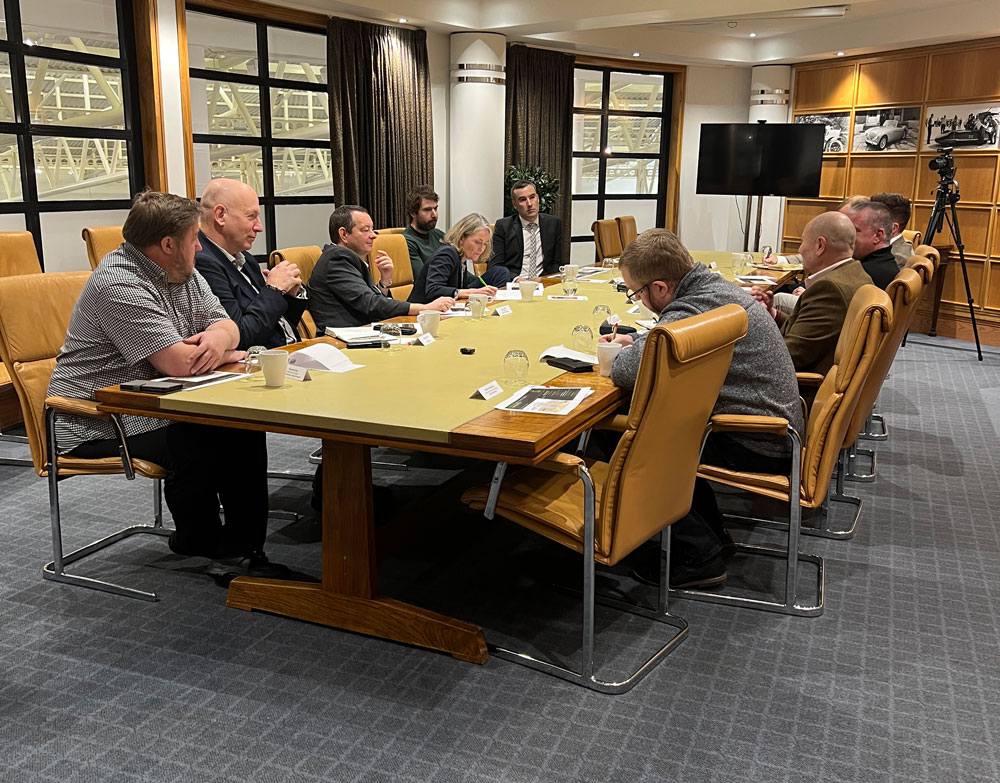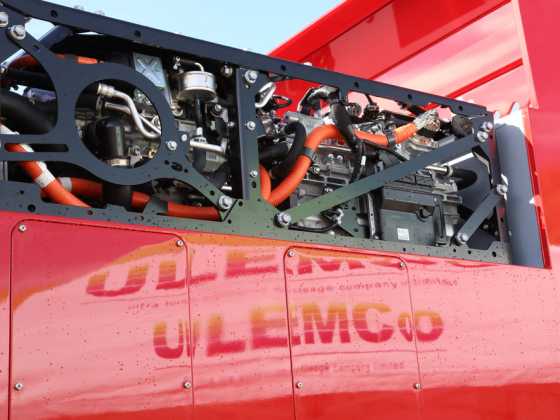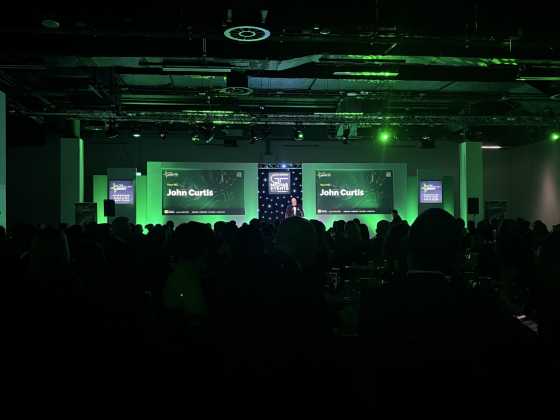A roundtable on fleet electrification

The latest roundtable, which took place at the British Motor Museum on 8 December, explored the business case for electric vehicles, the importance of data, operational change and innovation to support EV adoption
The last GreenFleet Roundtable of 2022 took place at the British Motor Museum in Gaydon on December, and was attended by leading fleets, including London Ambulance Service and Speedy Hire, as well as industry innovators Webfleet and one of the leading UK business payments company, Allstar.
We explored the importance of data, the business case for EVs, operational change and innovation to support EV adoption.
A different approach to the business case
We have seen many case studies showing the positive total cost of ownership (TCO) for EVs. But in practice, achieving a competitive TCO is less straight forward for certain vehicle types and duty cycles, and even more difficult when you include the capital cost of the recharging infrastructure.
Traditionally public sector procurement has a 60-70 per cent weighting towards price; with such a strong focus on cost, it is hardly surprising that some managers are struggling to bring EVs on to the fleet. The reality is that a different approach to procurement is needed; one that gives stronger weighting to environmental, social and governance (ESG) factors and considers softer benefits such as driver health and well-being.
It is also worth considering the cost of failing to switch to low emission: we have seen that scope 3 emissions are coming into focus for many large organisations who do not want high carbon-emitting vehicles in their supply chain. As time goes on, more ICE fleets should expect to be excluded from new tenders, or fail to renew existing contracts. And as we move closer to 2030, we will see more zero emission zones (like that operating in Oxford) which could further ham-string ICE fleets.
For forward thinking fleets, obligation can become opportunity. Data from Webfleet shows that servicing and maintenance costs are lower for EVs, but for fleets operating an inhouse workshops (common for local authority and blue light fleets), it is harder to recognise these savings. However, once the hard work of staff training is completed, there is an opportunity to generate revenue by offering servicing to third party fleets; something that is being explored by a few city councils.
Consider operational change
Reducing miles travelled, and right sizing the vehicle according to the task are a couple of the basics for fleet management; something that Webfleet understands well. Richard Parker, the company’s Corporate Sales Manager, explained that using a single telematics provider will ensure a single platform for mixed vehicle fleets and crucially a single point of insight for fleet optimisation – turning data into insight.
London Ambulance Service has gone one step further and used this insight when reviewing their shift patterns. Traditionally emergency vehicles work a 12 hour shift pattern; which often means that the whole fleet returns to depot at the same time. This shift pattern would create a huge problem for EV Charging as there simply wouldn’t be enough power at the depot to recharge the vehicles simultaneously. Chris Rutherford, fleet modernisation lead detailed how the Service has moved to a team based working model to stagger shifts ensuring vehicles can adequately charge throughout the day or night and return to base for charging during quieter periods such as midnight to 6am.
Vehicle data also supports better charging management
By tying together vehicle data and charging assets, it is also possible to streamline EV charging processes. Allstar has expanded its reach beyond their Allstar One Electric public charging card now offering home charging reimbursements, with developments for a workplace charging solution in 2023. This enables them to provide a single point of access for fleet management, billing and reporting.
Tom Rowlands, Managing Director of Global EV Solutions explained that the vision is to provide a 360 degree view of charging. Utilising the vehicle data is an important part of this, allowing fleets to monitor the battery state of charge to determine where and when the vehicle will require a recharge, be that home, work or at public chargepoints.
The vehicle data can be obtained through telematics, or in the future may be available directly from the vehicle OEMs as part of connected car innovations.
Either way, accessing the vehicle journey data and battery data really helps improve charging management.
Our fleets have observed that driver training and education is becoming increasingly important to charging. For example making sure the EV chargepoint speed is correctly matched to the vehicle’s onboard charger. There was also frustration that some drivers are unaware that the vehicles charging speed slows significantly once 80 per cent state of charge has been achieved, leading to changepoint blocking and journey delays. In the future Tom expects that drivers will receive automated push notifications that remove the complexity of planning recharging and better match the vehicle to the charging infrastructure.
The importance of stakeholder buy-in
Senior stakeholder buy-in (including the Chief Executive and Finance Director) is essential to ensure the financial and operational changes are put in place. Aaron Powell, Fleet Director at Speedy Asset Services agrees that this has certainly been a key success factor.
Aaron has been instrumental in introducing electric HGVs and Transits into their fleet, with plans to add 150 all electric vans every year. Speedy Asset Services is also rolling out EV charging across its 220 locations.
For fleets that are struggling to gain buy-in, the advice was to consider investing in an external consultant who can provide independent analysis of the fleet, as well as develop the business case and support the procurement. An external consultant can also help gain support for the adoption to ZE vehicles from the top down.
Our fleets were also encouraged to take advantage of the free resources available, such as fleet analysis and site surveys from eMobility service providers. There are also many OEMs who will provide demonstrator vehicles for one to two months, allowing a fleet to understand that nuances of range as well as charging needs.
Finally, one of the best resources available to fleets is the advice and learnings of other fleets on the EV journey – something that our roundtable attendees had in abundance!






